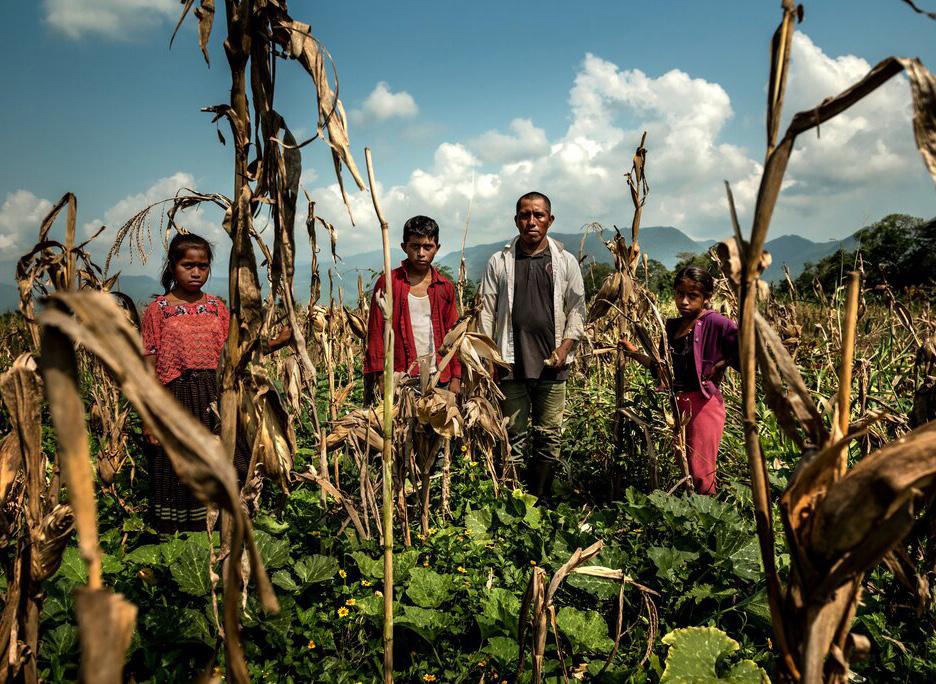
46 minute read
FIRST THREE SPREADS
from Publication Design
by Julia Kline
First 3 Spreads
For the first spreads I designed, I still was unsure which elements I was using. I experimented with two sets of refined tool kits. I picked what I thought were the best images for the article and I used some of the ideas from my thumbnail sketches to form the layouts.
Advertisement
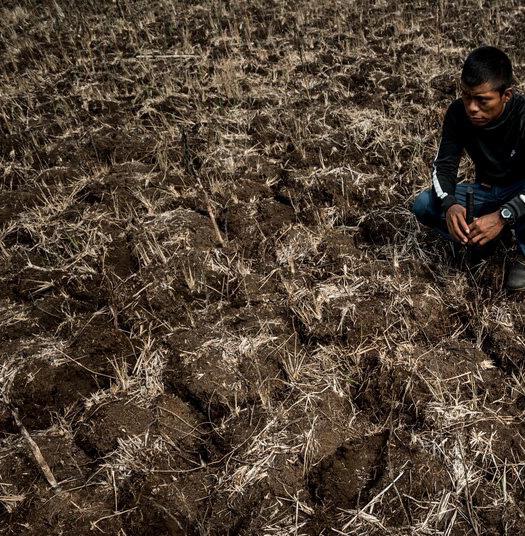
This article, the first in a series on global climate migration, is a partnership between ProPublica and The New York Times Magazine, with support from the Pulitzer Center.
The Great Climate Migration
ABRAHM LUSTGARTEN
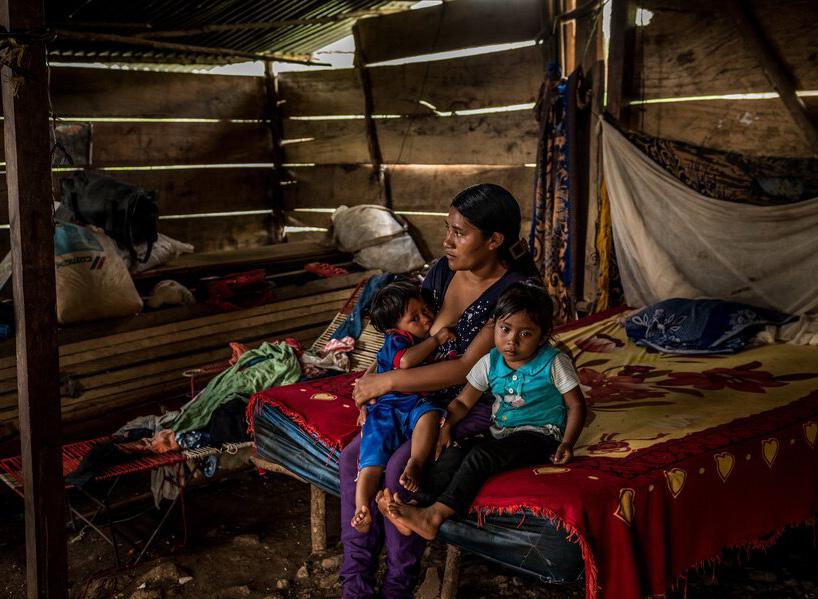
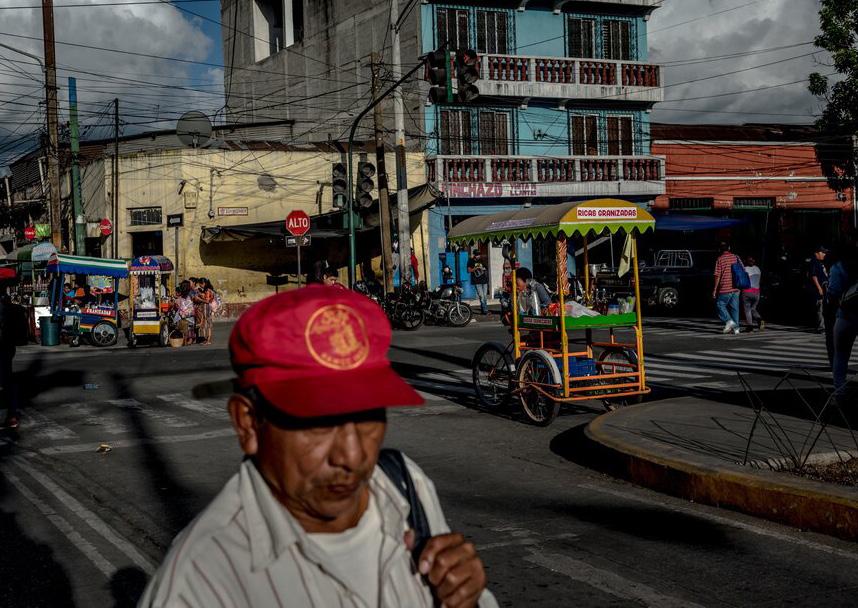
Top: ALTA VERAPAZ. Jorge A.’s wife, Eva María H., at home with two of their children.
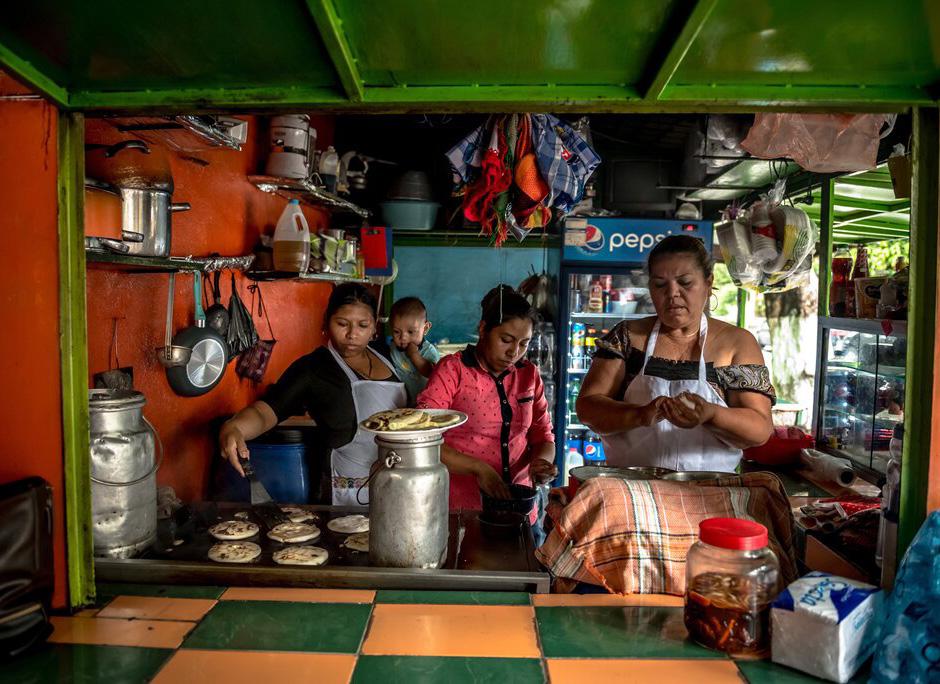
Bottom: SAN SALVADOR. Delmira de Jesús Cortez Barrera (left) and her sister (center) moved to the area after their family’s agriculture work dried up. Early in 2019, a year before the world shut its borders completely, Jorge A. knew he had to get out of Guatemala. The land was turning against him. For five years, it almost never rained. Then it did rain, and Jorge rushed his last seeds into the ground. The corn sprouted into healthy green stalks, and there was hope — until, without warning, the river flooded. Jorge waded chest-deep into his fields searching in vain for cobs he could still eat. Soon he made a last desperate bet, signing away the tin-roof hut where he lived with his wife and three children against a $1,500 advance in okra seed. But after the flood, the rain stopped again, and everything died. Jorge knew then that if he didn’t get out of Guatemala, his family might die, too. Even as hundreds of thousands of Guatemalans fled north toward the United States in recent years, in Jorge’s region — a state called Alta Verapaz, where precipitous mountains covered in coffee plantations and dense, dry forest give way to broader gentle valleys — the residents have largely stayed. Now, though, under a relentless confluence of drought, flood, bankruptcy and starvation, they, too, have begun to leave. Almost everyone here experiences some degree of uncertainty about where their next meal will come from. Half the children are chronically hungry, and many are short for their age, with weak bones and bloated bellies. Their families are all facing the same excruciating decision that confronted Jorge. The odd weather phenomenon that many blame for the suffering here — the drought and sudden storm pattern known as El Niño — is expected to become more frequent as the planet warms. Many semiarid parts of Guatemala will soon be more like a desert. Rainfall is expected to decrease by 60 percent in some parts of the country, and the amount of water replenishing streams and keeping soil moist will drop by as much as 83 percent. Researchers project that by 2070, yields of some staple crops in the state where Jorge lives will decline by nearly a third. Scientists have learned to project such changes around the world with surprising precision, but — until recently — little has been known about the human consequences of those changes. As their land fails them, hundreds of millions of people from Central America to Sudan to the Mekong Delta will be forced to choose between flight or death. The result will almost certainly be the greatest wave of global migration the world has seen. In March, Jorge and his 7-year-old son each packed a pair of pants, three T-shirts, underwear and a toothbrush into a single thin black nylon sack with a drawstring. Jorge’s father had pawned his last four goats for $2,000 to help pay for their transit, another loan the family would have to repay at 100 percent interest. The coyote called at 10 p.m. — they would go that night. They had no idea then where they would wind up, or what they would do when they got there. From decision to departure, it was three days. And then they were gone. For most of human history, people have lived within a surprisingly narrow range of temperatures, in the places where the climate supported abundant food production. But as the planet warms, that band is suddenly shifting north. According to a pathbreaking recent study in the journal Proceedings of the National Academy of Sciences, the planet could see a greater temperature increase in the next 50 years than it did in the last 6,000 years combined. By 2070, the kind of extremely hot zones, like in the Sahara, that now cover less than 1 percent of the earth’s land surface could cover nearly a fifth of the land, potentially placing one of every three people alive outside the climate niche where humans have thrived for thousands of years. Many will dig in, suffering through heat, hunger and political chaos, but others will be forced to move on. A 2017 study in Science Advances found that by 2100, temperatures could rise to the point that just going outside for a few hours in some places, including parts of India and Eastern China, “will result in death even for the fittest of humans.” People are already beginning to flee. In Southeast Asia, where increasingly unpredictable monsoon rainfall and drought have made farming more difficult, the World Bank points to more than eight million people who have moved toward the Middle East, Europe and North America. In the African Sahel, millions of rural people have been streaming toward the coasts and the cities amid drought and widespread crop failures. Should the flight away from hot climates reach the scale that current research suggests is likely, it will amount to a vast remapping of the world’s populations. Migration can bring great opportunity not just to migrants but also to the places they go. As the United States and other parts of the global North face a demographic decline, for instance, an injection of new people into an aging work force could be to everyone’s benefit. But securing these benefits starts with a choice: Northern nations can relieve pressures on the fastest-warming countries by allowing more migrants to move north across their borders, or they can seal themselves off, trapping hundreds of millions of people in places that are increasingly unlivable. The best outcome requires not only good will and the careful management of turbulent political forces; without preparation and planning, the sweeping scale of change could prove wildly destabilizing. The United Nations and others warn that in the worst case, the governments of the nations most affected by climate change could topple as whole regions devolve into war. The stark policy choices are already becoming apparent. As refugees stream out of the Middle East and North Africa into Europe and from Central America into the United States, an anti-immigrant backlash has propelled nationalist governments into power around the world. The alternative, driven by a better understanding of how and when people will move, is governments that are actively preparing, both materially and politically, for the greater changes to come. Last summer, I went to Central America to learn how people like Jorge will respond to changes in their climates. I followed the decisions of people in rural Guatemala and their routes to the region’s biggest cities, then north through Mexico to Texas. I found an astonishing need for food and witnessed the ways competition and poverty among the displaced broke down cultural and moral boundaries. But the picture on the ground is scattered. To better understand the forces and scale of climate migration over a broader area, The New York Times Magazine and ProPublica joined with the Pulitzer Center in an effort to model, for the first time, how people will move across borders. We focused on changes in Central America and used climate and economic-development data to examine a range of scenarios. Our model projects that migration will rise every year regardless of climate, but that the amount of migration increases substantially as the climate changes. In the most extreme climate scenarios, more than 30 million migrants would head toward the U.S. border over the course of the next 30 years. Migrants move for many reasons, of course. The model helps us see which migrants are driven primarily by climate, finding that they would make up as much as 5 percent of the total. If governments take modest action to reduce climate emissions, about 680,000 climate migrants might move from Central America and Mexico to the United States between now and 2050. If emissions continue unabated, leading to more extreme warming, that number jumps to more than a million people. (None of these figures include undocumented immigrants, whose numbers could be twice as high.)
GUATEMALA CITY. Crop failures are causing more rural residents to migrate to urban areas.
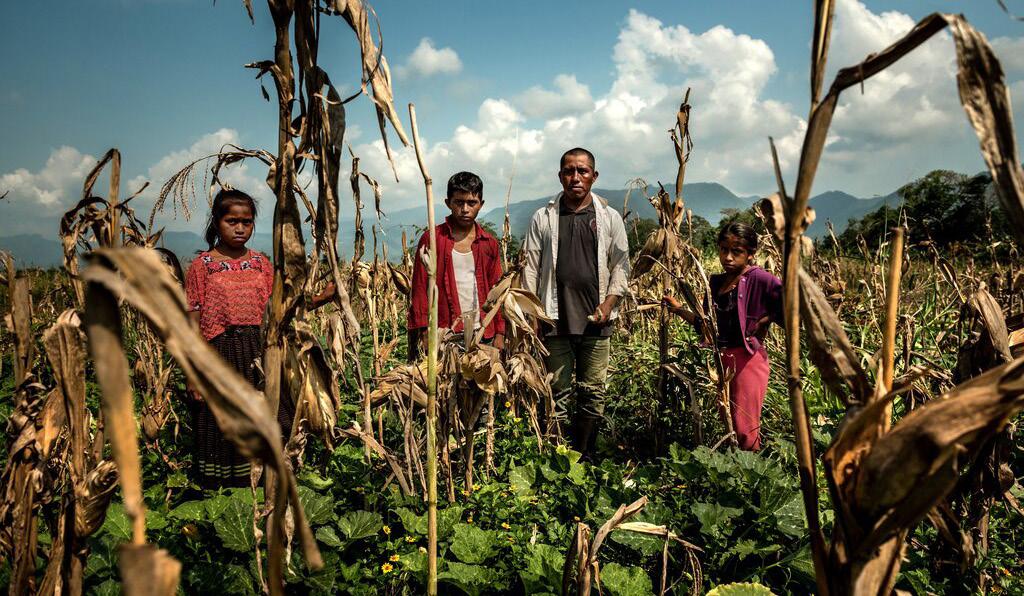
ALTA VERAPAZ, GUATEMALA. Carlos Tiul, an Indigenous farmer whose maize crop has failed, with his children. As with much modeling work, the point here is not to provide concrete numerical predictions so much as it is to provide glimpses into possible futures. Human movement is notoriously hard to model, and as many climate researchers have noted, it is important not to add a false precision to the political battles that inevitably surround any discussion of migration. But our model offers something far more potentially valuable to policymakers: a detailed look at the staggering human suffering that will be inflicted if countries shut their doors. In recent months, the coronavirus pandemic has offered a test run on whether humanity has the capacity to avert a predictable — and predicted — catastrophe. Some countries have fared better. But the United States has failed. The climate crisis will test the developed world again, on a larger scale, with higher stakes. The only way to mitigate the most destabilizing aspects of mass migration is to prepare for it, and preparation demands a sharper imagining of where people are likely to go, and when. The modeling was a start. But it was hyperlocal instead of global, and it left open huge questions: how cultural differences might change outcomes, for example, or how population shifts might occur across larger regions. It was also controversial, igniting a backlash among climate-change skeptics, who attacked the modeling effort as “guesswork” built on “tenuous assumptions” and argued that a model couldn’t untangle the effect of climate change from all the other complex influences that determine human decision-making and migration. That argument eventually found some traction with migration researchers, many of whom remain reluctant to model precise migration figures. But to Oppenheimer and Krueger, the risks of putting a specific shape to this well established but amorphous threat seemed worth taking. In the early 1970s, after all, many researchers had made a similar argument against using computer models to forecast climate change, arguing that scientists shouldn’t traffic in predictions. Others ignored that advice, producing some of the earliest projections about the dire impact of climate change, and with them some of the earliest opportunities to try to steer away from that fate. Trying to project the consequences of climate-driven migration, to Oppenheimer, called for similarly provocative efforts. “If others have better ideas for estimating how climate change affects migration,” he wrote in 2010, “they should publish them.” Since then, Oppenheimer’s approach has become common. Dozens more studies have applied econometric modeling to climate-related problems, seizing on troves of data to better understand how environmental change and conflict each lead to migration and clarify how the cycle works. Climate is rarely the main cause of migration, the studies have generally found, but it is almost always an exacerbating one. As they have looked more closely, migration researchers have found climate’s subtle fingerprints almost everywhere. Drought helped push many Syrians into cities before the war, worsening tensions and leading to rising discontent; crop losses led to unemployment that stoked Arab Spring uprisings in Egypt and Libya; Brexit, even, was arguably a ripple effect of the influx of migrants brought to Europe by the wars that followed. And all those effects were bound up with the movement of just two million people. As the mechanisms of climate migration have come into sharper focus — food scarcity, water scarcity and heat — the latent potential for large-scale movement comes to seem astronomically larger. North Africa’s Sahel provides an example. In the nine countries stretching across the continent from Mauritania to Sudan, extraordinary population growth and steep environmental decline are on a collision course. Past droughts, most likely caused by climate change, have already killed more than 100,000 people there. And the region — with more than 150 million people and growing — is threatened by rapid desertification, even more severe water shortages and deforestation. Today researchers at the United Nations estimate that some 65 percent of farmable lands have already been degraded. “My deep fear,” said Solomon Hsiang, a climate researcher and economist at the University of California, Berkeley, is that Africa’s transition into a post-climate-change civilization “leads to a constant outpouring of people.” The story is similar in South Asia, where nearly one-fourth of the global population lives. The World Bank projects that the region will soon have the highest prevalence of food insecurity in the world. While some 8.5 million people have fled already — resettling mostly in the Persian Gulf — 17 million to 36 million more people may soon be uprooted, the World Bank found. If past patterns are a measure, many will settle in India’s Ganges Valley; by the end of the century, heat waves and humidity will become so extreme there that people without air-conditioning will simply die. Today, 1% of the world is a barely livable hot zone. By 2070, that portion could go up to 19%. Billions of people call this land home. Where will they go?
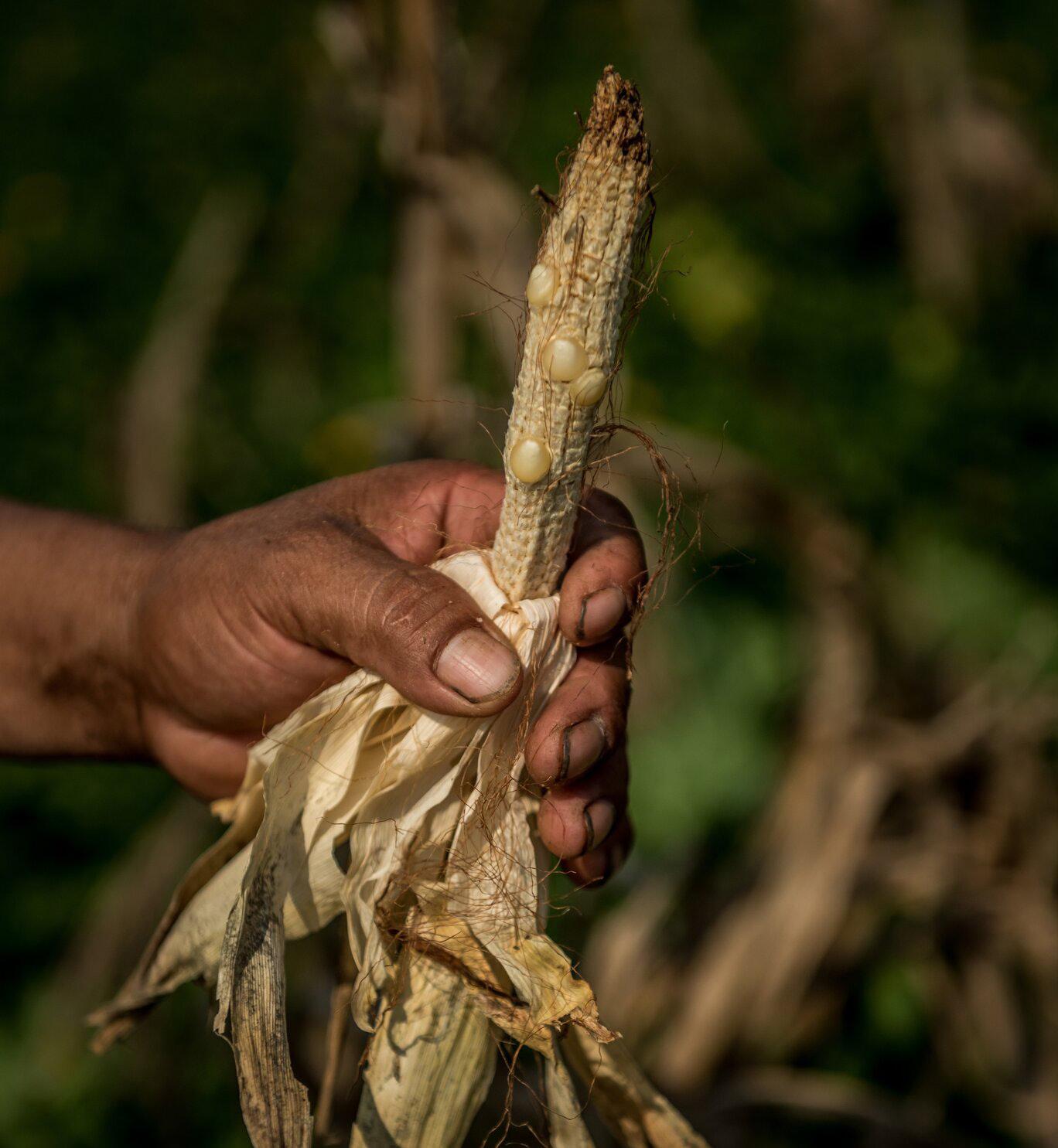
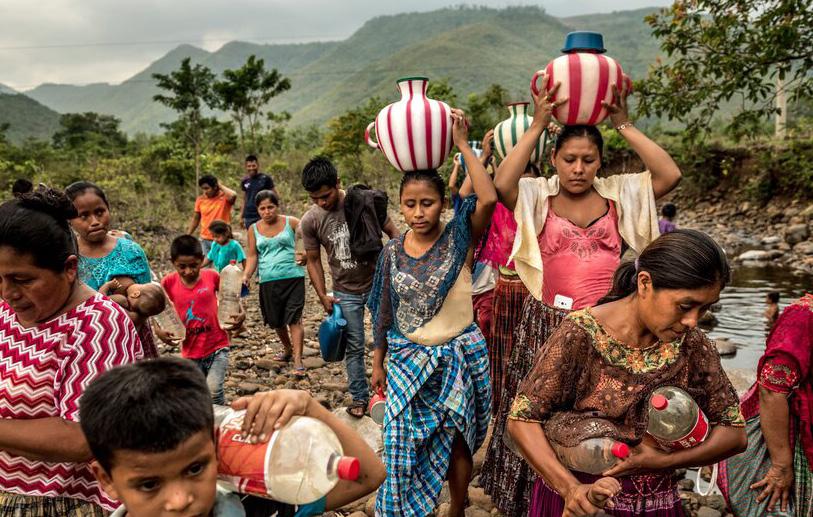
ALTA VERAPAZ. An ear of maize from a failed crop. If it is not drought and crop failures that force large numbers of people to flee, it will be the rising seas. We are now learning that climate scientists have been underestimating the future displacement from rising tides by a factor of three, with the likely toll being some 150 million globally. New projections show high tides subsuming much of Vietnam by 2050 — including most of the Mekong Delta, now home to 18 million people — as well as parts of China and Thailand, most of southern Iraq and nearly all of the Nile Delta, Egypt’s breadbasket. Many coastal regions of the United States are also at risk. Through all the research, rough predictions have emerged about the scale of total global climate migration — they range from 50 million to 300 million people displaced — but the global data is limited, and uncertainty remained about how to apply patterns of behavior to specific people in specific places. Now, though, new research on both fronts has created an opportunity to improve the models tremendously. A few years ago, climate geographers from Columbia University and the City University of New York began working with the World Bank to build a next-generation tool to establish plausible migration scenarios for the future. The idea was to build on the Oppenheimer-style measure of response to the environment with other methods of analysis, including a “gravity” model, which assesses the relative attractiveness of destinations with the hope of mathematically anticipating where migrants might end up. The resulting report,published in early 2018, involved six European and American institutions and took nearly two years to complete. The bank’s work targeted climate hot spots in sub-Saharan Africa, South Asia and Latin America, focusing not on the emergency displacement of people from natural disasters but on their premeditated responses to what researchers call “slow-onset” shifts in the environment. They determined that as climate change progressed in just these three regions alone, as many as 143 million people would be displaced within their own borders, moving mostly from rural areas to nearby towns and cities. The study, though, wasn’t fine-tuned to specific climatic changes like declining groundwater. And it didn’t even try to address the elephant in the room: How would the climate push people to migrate across international borders? Our modeling and the consensus of academics point to the same bottom line: If societies respond aggressively to climate change and migration and increase their resilience to it, food production will be shored up, poverty reduced and international migration slowed — factors that could help the world remain more stable and more peaceful. If leaders take fewer actions against climate change, or more punitive ones against migrants, food insecurity will deepen, as will poverty. Populations will surge, and cross-border movement will be restricted, leading to greater suffering. Whatever actions governments take next — and when they do it — makes a difference. The window for action is closing. The world can now expect that with every degree of temperature increase, roughly a billion people will be pushed outside the zone in which humans have lived for thousands of years. For a long time, the climate alarm has been sounded in terms of its economic toll, but now it can increasingly be counted in people harmed. The worst danger, Hinde warned on our walk, is believing that something so frail and ephemeral as a wall can ever be an effective shield against the tide of history. “If we don’t develop a different attitude,” he said, “we’re going to be like people in the lifeboat, beating on those that are trying to climb in.”
ALTA VERAPAZ. Residents near the trickle that remains of the river that once flowed through the Nuevo Paraíso Indigenous community.


This article, the first in a series on global climate migration, is a partnership between ProPublica and The New York Times Magazine, with support from the Pulitzer Center.
The Great Climate Migration
ABRAHM LUSTGARTEN


Top: ALTA VERAPAZ. Jorge A.’s wife, Eva María H., at home with two of their children.
Bottom: SAN SALVADOR. Delmira de Jesús Cortez Barrera (left) and her sister (center) moved to the area after their family’s agriculture work dried up. Early in 2019, a year before the world shut its borders completely, Jorge A. knew he had to get out of Guatemala. The land was turning against him. For five years, it almost never rained. Then it did rain, and Jorge rushed his last seeds into the ground. The corn sprouted into healthy green stalks, and there was hope — until, without warning, the river flooded. Jorge waded chest-deep into his fields searching in vain for cobs he could still eat. Soon he made a last desperate bet, signing away the tin-roof hut where he lived with his wife and three children against a $1,500 advance in okra seed. But after the flood, the rain stopped again, and everything died. Jorge knew then that if he didn’t get out of Guatemala, his family might die, too. Even as hundreds of thousands of Guatemalans fled north toward the United States in recent years, in Jorge’s region — a state called Alta Verapaz, where precipitous mountains covered in coffee plantations and dense, dry forest give way to broader gentle valleys — the residents have largely stayed. Now, though, under a relentless confluence of drought, flood, bankruptcy and starvation, they, too, have begun to leave. Almost everyone here experiences some degree of uncertainty about where their next meal will come from. Half the children are chronically hungry, and many are short for their age, with weak bones and bloated bellies. Their families are all facing the same excruciating decision that confronted Jorge. The odd weather phenomenon that many blame for the suffering here — the drought and sudden storm pattern known as El Niño — is expected to become more frequent as the planet warms. Many semiarid parts of Guatemala will soon be more like a desert. Rainfall is expected to decrease by 60 percent in some parts of the country, and the amount of water replenishing streams and keeping soil moist will drop by as much as 83 percent. Researchers project that by 2070, yields of some staple crops in the state where Jorge lives will decline by nearly a third. Scientists have learned to project such changes around the world with surprising precision, but — until recently — little has been known about the human consequences of those changes. As their land fails them, hundreds of millions of people from Central America to Sudan to the Mekong Delta will be forced to choose between flight or death. The result will almost certainly be the greatest wave of global migration the world has seen. In March, Jorge and his 7-year-old son each packed a pair of pants, three T-shirts, underwear and a toothbrush into a single thin black nylon sack with a drawstring. Jorge’s father had pawned his last four goats for $2,000 to help pay for their transit, another loan the family would have to repay at 100 percent interest. The coyote called at 10 p.m. — they would go that night. They had no idea then where they would wind up, or what they would do when they got there. From decision to departure, it was three days. And then they were gone. For most of human history, people have lived within a surprisingly narrow range of temperatures, in the places where the climate supported abundant food production. But as the planet warms, that band is suddenly shifting north. According to a pathbreaking recent study in the journal Proceedings of the National Academy of Sciences, the planet could see a greater temperature increase in the next 50 years than it did in the last 6,000 years combined. By 2070, the kind of extremely hot zones, like in the Sahara, that now cover less than 1 percent of the earth’s land surface could cover nearly a fifth of the land, potentially placing one of every three people alive outside the climate niche where humans have thrived for thousands of years. Many will dig in, suffering through heat, hunger and political chaos, but others will be forced to move on. A 2017 study in Science Advances found that by 2100, temperatures could rise to the point that just going outside for a few hours in some places, including parts of India and Eastern China, “will result in death even for the fittest of humans.” People are already beginning to flee. In Southeast Asia, where increasingly unpredictable monsoon rainfall and drought have made farming more difficult, the World Bank points to more than eight million people who have moved toward the Middle East, Europe and North America. In the African Sahel, millions of rural people have been streaming toward the coasts and the cities amid drought and widespread crop failures. Should the flight away from hot climates reach the scale that current research suggests is likely, it will amount to a vast remapping of the world’s populations. Migration can bring great opportunity not just to migrants but also to the places they go. As the United States and other parts of the global North face a demographic decline, for instance, an injection of new people into an aging work force could be to everyone’s benefit. But securing these benefits starts with a choice: Northern nations can relieve pressures on the fastest-warming countries by allowing more migrants to move north across their borders, or they can seal themselves off, trapping hundreds of millions of people in places that are increasingly unlivable. The best outcome requires not only good will and the careful management of turbulent political forces; without preparation and planning, the sweeping scale of change could prove wildly destabilizing. The United Nations and others warn that in the worst case, the governments of the nations most affected by climate change could topple as whole regions devolve into war. The stark policy choices are already becoming apparent. As refugees stream out of the Middle East and North Africa into Europe and from Central America into the United States, an anti-immigrant backlash has propelled nationalist governments into power around the world. The alternative, driven by a better understanding of how and when people will move, is governments that are actively preparing, both materially and politically, for the greater changes to come. Last summer, I went to Central America to learn how people like Jorge will respond to changes in their climates. I followed the decisions of people in rural Guatemala and their routes to the region’s biggest cities, then north through Mexico to Texas. I found an astonishing need for food and witnessed the ways competition and poverty among the displaced broke down cultural and moral boundaries. But the picture on the ground is scattered. To better understand the forces and scale of climate migration over a broader area, The New York Times Magazine and ProPublica joined with the Pulitzer Center in an effort to model, for the first time, how people will move across borders. We focused on changes in Central America and used climate and economic-development data to examine a range of scenarios. Our model projects that migration will rise every year regardless of climate, but that the amount of migration increases substantially as the climate changes. In the most extreme climate scenarios, more than 30 million migrants would head toward the U.S. border over the course of the next 30 years. Migrants move for many reasons, of course. The model helps us see which migrants are driven primarily by climate, finding that they would make up as much as 5 percent of the total. If governments take modest action to reduce climate emissions, about 680,000 climate migrants might move from Central America and Mexico to the United States between now and 2050. If emissions continue unabated, leading to more extreme warming, that number jumps to more than a million people. (None of these figures include undocumented immigrants, whose numbers could be twice as high.) “
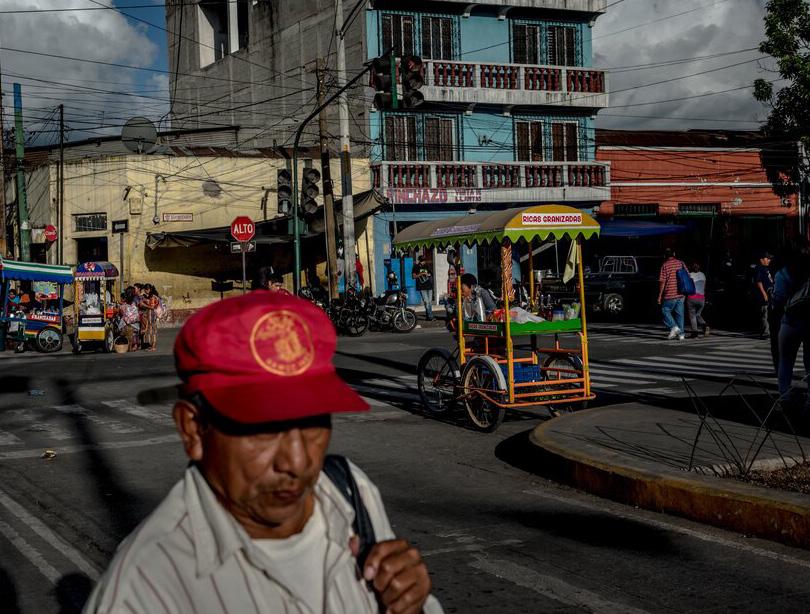
GUATEMALA CITY. Crop failures are causing more rural residents to migrate to urban areas.
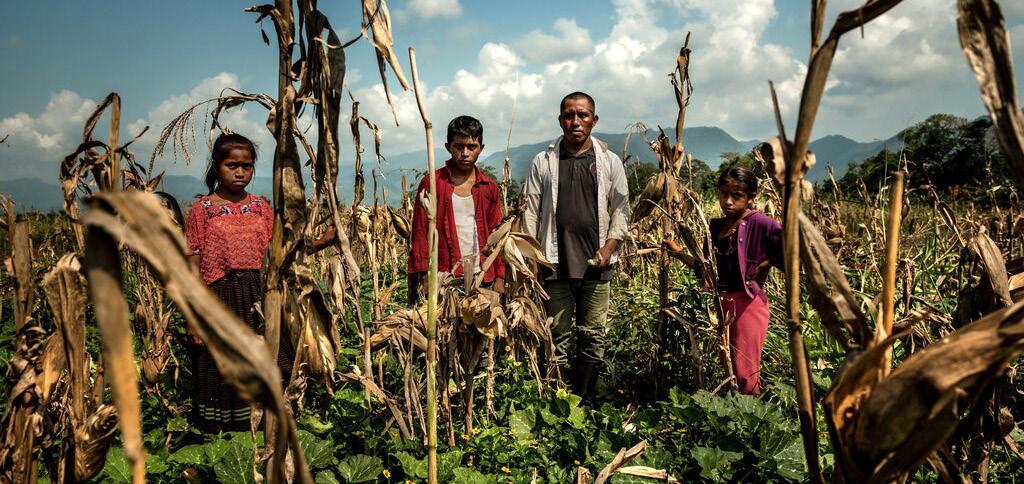
ALTA VERAPAZ, GUATEMALA. Carlos Tiul, an Indigenous farmer whose maize crop has failed, with his children. As with much modeling work, the point here is not to provide concrete numerical predictions so much as it is to provide glimpses into possible futures. Human movement is notoriously hard to model, and as many climate researchers have noted, it is important not to add a false precision to the political battles that inevitably surround any discussion of migration. But our model offers something far more potentially valuable to policymakers: a detailed look at the staggering human suffering that will be inflicted if if countries shut their doors. In recent months, the coronavirus pandemic has offered a test run on whether humanity has the capacity to avert a predictable — and predicted — catastrophe. Some countries have fared better. But the United States has failed. The climate crisis will test the developed world again, on a larger scale, with higher stakes. The only way to mitigate the most destabilizing aspects of mass migration is to prepare for it, and preparation demands a sharper imagining of where people are likely to go, and when. The modeling was a start. But it was hyperlocal instead of global, and it left open huge questions: how cultural differences might change outcomes, for example, or how population shifts might occur across larger regions. It was also controversial, igniting a backlash among climate-change skeptics, who attacked the modeling effort as “guesswork” built on “tenuous assumptions” and argued that a model couldn’t untangle the effect of climate change from all the other complex influences that determine human decision-making and migration. That argument eventually found some traction with migration researchers, many of whom remain reluctant to model precise migration figures. But to Oppenheimer and Krueger, the risks of putting a specific shape to this well established but amorphous threat seemed worth taking. In the early 1970s, after all, many researchers had made a similar argument against using computer models to forecast climate change, arguing that scientists shouldn’t traffic in predictions. Others ignored that advice, producing some of the earliest projections about the dire impact of climate change, and with them some of the earliest opportunities to try to steer away from that fate. Trying to project the consequences of climate-driven migration, to Oppenheimer, called for similarly provocative efforts. “If others have better ideas for estimating how climate change affects migration,” he wrote in 2010, “they should publish them.” Since then, Oppenheimer’s approach has become common. Dozens more studies have applied econometric modeling to climate-related problems, seizing on troves of data to better understand how environmental change and conflict each lead to migration and clarify how the cycle works. Climate is rarely the main cause of migration, the studies have generally found, but it is almost always an exacerbating one almost always an exacerbating one. As they have looked more closely, migration researchers have found climate’s subtle fingerprints almost everywhere. Drought helped push many Syrians into cities before the war, worsening tensions and leading to rising discontent; crop losses led to unemployment that stoked Arab Spring uprisings in Egypt and Libya; Brexit, even, was arguably a ripple effect of the influx of migrants brought to Europe by the wars that followed. And all those effects were bound up with the movement of just two million people. As the mechanisms of climate migration have come into sharper focus — food scarcity, water scarcity and heat — the latent potential for large-scale movement comes to seem astronomically larger.
Today, 1% of the world is a barely livable hot zone By 2070, that portion could go up to 19%. Billions of people call this land home. Where will they go?

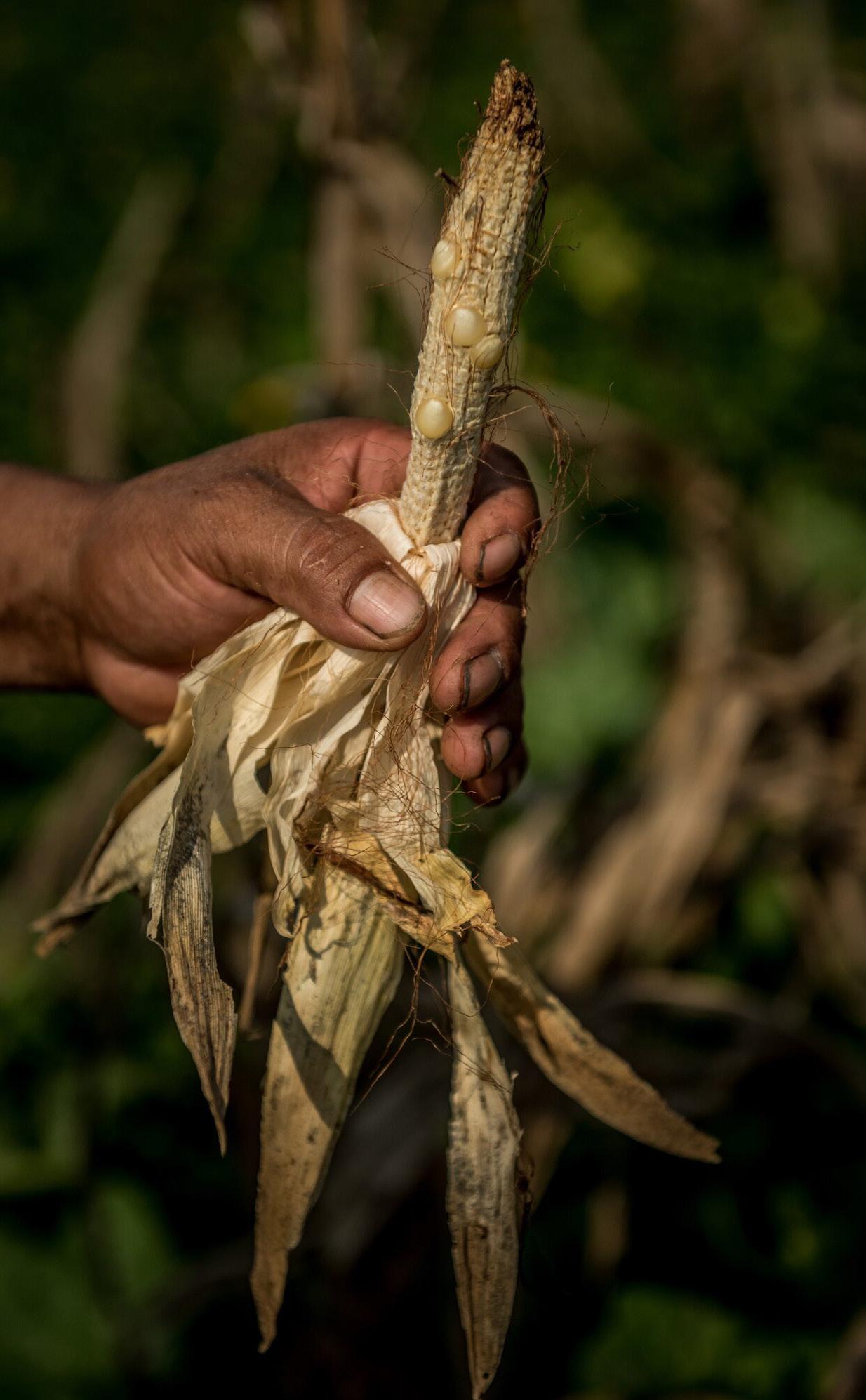
North Africa’s Sahel provides an example. In the nine countries stretching across the continent from Mauritania to Sudan, extraordinary population growth and steep environmental decline are on a collision course. Past droughts, most likely caused by climate change, have already killed more than 100,000 people there. And the region — with more than 150 million people and growing — is threatened by rapid desertification, even more severe water shortages and deforestation. Today researchers at the United Nations estimate that some 65 percent of farmable lands have already been degraded. “My deep fear,” said Solomon Hsiang, a climate researcher and economist at the University of California, Berkeley, is that Africa’s transition into a post-climate-change civilization “leads to a constant outpouring of people.” The story is similar in South Asia, where nearly onefourth of the global population lives. The World Bank projects that the region will soon have the highest prevalence of food insecurity in the world. While some 8.5 million people have fled already — resettling mostly in the Persian Gulf — 17 million to 36 million more people may soon be uprooted, the World Bank found. If past patterns are a measure, many will settle in India’s Ganges Valley; by the end of the century, heat waves and humidity will become so extreme there that people without air-conditioning will simply die. If it is not drought and crop failures that force large numbers of people to flee, it will be the rising seas. We are now learning that climate scientists have been underestimating the future displacement from rising tides by a factor of three, with the likely toll being some 150 million globally. New projections show high tides subsuming much of Vietnam by 2050 — including most of the Mekong Delta, now home to 18 million people — as well as parts of China and Thailand, most of southern Iraq and nearly all of the Nile Delta, Egypt’s breadbasket. Many coastal regions of the United States are also at risk. Through all the research, rough predictions have emerged about the scale of total global climate migration — they range from 50 million to 300 million people displaced — but the global data is limited, and uncertainty remained about how to apply patterns of behavior to specific people in specific places. Now, though, new research on both fronts has created an opportunity to improve the models tremendously. A few years ago, climate geographers from Columbia University and the City University of New York began working with the World Bank to build a next-generation tool to establish plausible migration scenarios for the future. The idea was to build on the Oppenheimer-style measure of response to the environment with other methods of analysis, including a “gravity” model, which assesses the relative attractiveness of destinations with the hope of mathematically anticipating where migrants might end up. The resulting report,published in early 2018, involved six European and American institutions and took nearly two years to complete. The bank’s work targeted climate hot spots in sub-Saharan Africa, South Asia and Latin America, focusing not on the emergency displacement of people from natural disasters but on their premeditated responses to what researchers call “slow-onset” shifts in the environment. They determined that as climate change progressed in just these three regions alone, as many as 143 million people would be displaced within their own borders, moving mostly from rural areas to nearby towns and cities. The study, though, wasn’t fine-tuned to specific climatic changes like declining groundwater. And it didn’t even try to address the elephant in the room: How would the climate push people to migrate across international borders? Our modeling and the consensus of academics point to the same bottom line: If societies respond aggressively to climate change and migration and increase their resilience to it, food production will be shored up, poverty reduced and international migration slowed — factors that could help the world remain more stable and more peaceful. If leaders take fewer actions against climate change, or more punitive ones against migrants, food insecurity will deepen, as will poverty. Populations will surge, and cross-border movement will be restricted, leading to greater suffering. Whatever actions governments take next — and when they do it — makes a difference. The window for action is closing. The world can now expect that with every degree of temperature increase, roughly a billion people will be pushed outside the zone in which humans have lived for thousands of years. For a long time, the climate alarm has been sounded in terms of its economic toll, but now it can increasingly be counted in people harmed. The worst danger, Hinde warned on our walk, is believing that something so frail and ephemeral as a wall can ever be an effective shield against the tide of history. “If we don’t develop a different attitude,” he said, “we’re going to be like people in the lifeboat, beating on those that are trying to climb in.”
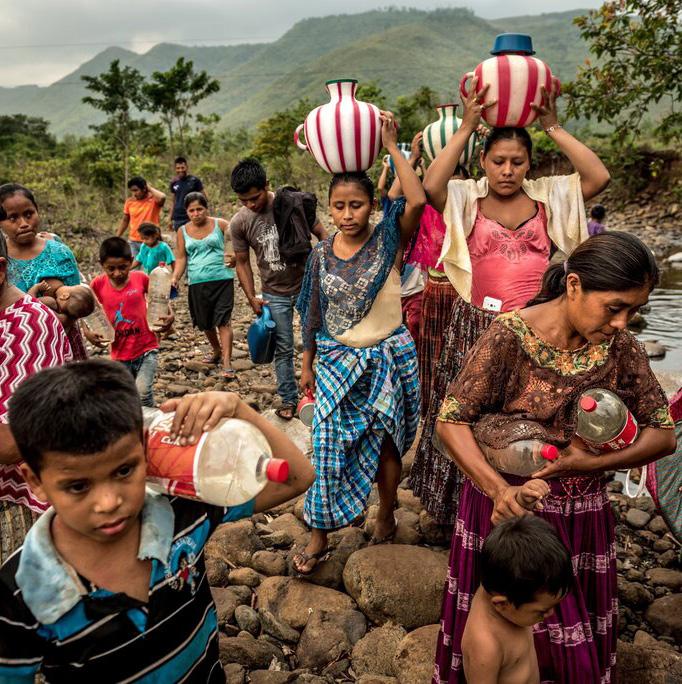
Left: ALTA VERAPAZ. An ear of maize from a failed crop.
Right: ALTA VERAPAZ. Residents near the trickle that remains of the river that once flowed through the Nuevo Paraíso Indigenous community.


This article, the first in a series on global climate migration, is a partnership between ProPublica and The New York Times Magazine, with support from the Pulitzer Center.
The Great Climate Migration
ABRAHM LUSTGARTEN
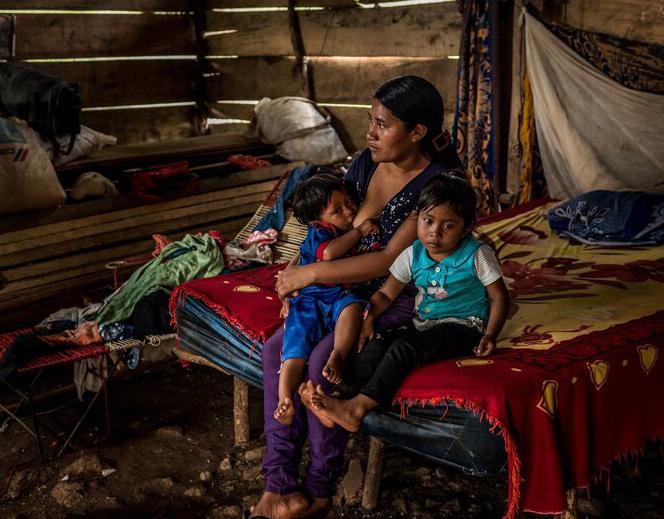
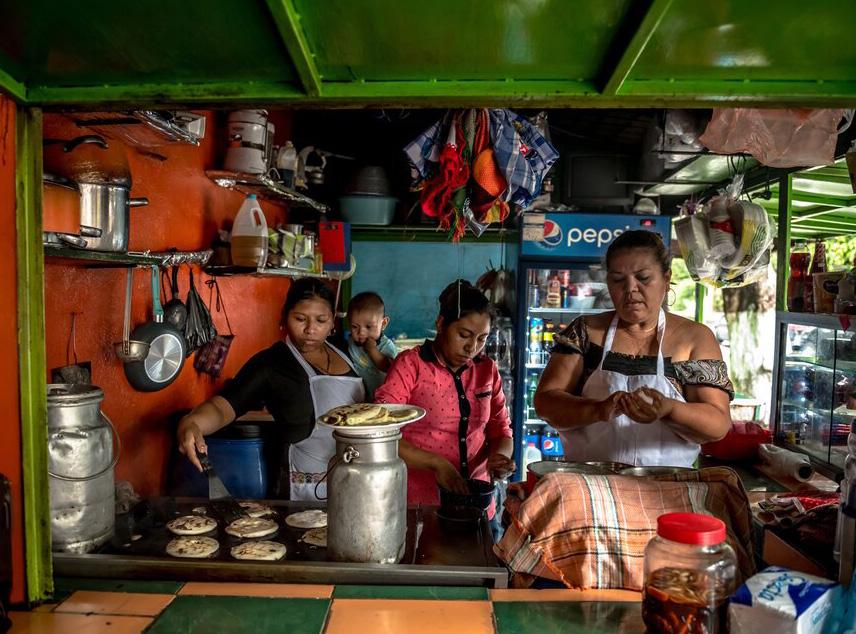
Top: ALTA VERAPAZ. Jorge A.’s wife, Eva María H., at home with two of their children.
Bottom: SAN SALVADOR. Delmira de Jesús Cortez Barrera (left) and her sister (center) moved to the area after their family’s agriculture work dried up. Early in 2019, a year before the world shut its borders completely, Jorge A. knew he had to get out of Guatemala. The land was turning against him. For five years, it almost never rained. Then it did rain, and Jorge rushed his last seeds into the ground. The corn sprouted into healthy green stalks, and there was hope — until, without warning, the river flooded. Jorge waded chest-deep into his fields searching in vain for cobs he could still eat. Soon he made a last desperate bet, signing away the tin-roof hut where he lived with his wife and three children against a $1,500 advance in okra seed. But after the flood, the rain stopped again, and everything died. Jorge knew then that if he didn’t get out of Guatemala, his family might die, too. Even as hundreds of thousands of Guatemalans fled north toward the United States in recent years, in Jorge’s region — a state called Alta Verapaz, where precipitous mountains covered in coffee plantations and dense, dry forest give way to broader gentle valleys — the residents have largely stayed. Now, though, under a relentless confluence of drought, flood, bankruptcy and starvation, they, too, have begun to leave. Almost everyone here experiences some degree of uncertainty about where their next meal will come from. Half the children are chronically hungry, and many are short for their age, with weak bones and bloated bellies. Their families are all facing the same excruciating decision that confronted Jorge. The odd weather phenomenon that many blame for the suffering here — the drought and sudden storm pattern known as El Niño — is expected to become more frequent as the planet warms. Many semiarid parts of Guatemala will soon be more like a desert. Rainfall is expected to decrease by 60 percent in some parts of the country, and the amount of water replenishing streams and keeping soil moist will drop by as much as 83 percent. Researchers project that by 2070, yields of some staple crops in the state where Jorge lives will decline by nearly a third. Scientists have learned to project such changes around the world with surprising precision, but — until recently — little has been known about the human consequences of those changes. As their land fails them, hundreds of millions of people from Central America to Sudan to the Mekong Delta will be forced to choose between flight or death. The result will almost certainly be the greatest wave of global migration the world has seen. In March, Jorge and his 7-year-old son each packed a pair of pants, three T-shirts, underwear and a toothbrush into a single thin black nylon sack with a drawstring. Jorge’s father had pawned his last four goats for $2,000 to help pay for their transit, another loan the family would have to repay at 100 percent interest. The coyote called at 10 p.m. — they would go that night. They had no idea then where they would wind up, or what they would do when they got there. From decision to departure, it was three days. And then they were gone. For most of human history, people have lived within a surprisingly narrow range of temperatures, in the places where the climate supported abundant food production. But as the planet warms, that band is suddenly shifting north. According to a pathbreaking recent study in the journal Proceedings of the National Academy of Sciences, the planet could see a greater temperature increase in the next 50 years than it did in the last 6,000 years combined. By 2070, the kind of extremely hot zones, like in the Sahara, that now cover less than 1 percent of the earth’s land surface could cover nearly a fifth of the land, potentially placing one of every three people alive outside the climate niche where humans have thrived for thousands of years. Many will dig in, suffering through heat, hunger and political chaos, but others will be forced to move on. A 2017 study in Science Advances found that by 2100, temperatures could rise to the point that just going outside for a few hours in some places, including parts of India and Eastern China, “will result in death even for the fittest of humans.” People are already beginning to flee. In Southeast Asia, where increasingly unpredictable monsoon rainfall and drought have made farming more difficult, the World Bank points to more than eight million people who have moved toward the Middle East, Europe and North America. In the African Sahel, millions of rural people have been streaming toward the coasts and the cities amid drought and widespread crop failures. Should the flight away from hot climates reach the scale that current research suggests is likely, it will amount to a vast remapping of the world’s populations. Migration can bring great opportunity not just to migrants but also to the places they go. As the United States and other parts of the global North face a demographic decline, for instance, an injection of new people into an aging work force could be to everyone’s benefit. But securing these benefits starts with a choice: Northern nations can relieve pressures on the fastest-warming countries by allowing more migrants to move north across their borders, or they can seal themselves off, trapping hundreds of millions of people in places that are increasingly unlivable. The best outcome requires not only good will and the careful management of turbulent political forces; without preparation and planning, the sweeping scale of change could prove wildly destabilizing. The United Nations and others warn that in the worst case, the governments of the nations most affected by climate change could topple as whole regions devolve into war. The stark policy choices are already becoming apparent. As refugees stream out of the Middle East and North Africa into Europe and from Central America into the United States, an anti-immigrant backlash has propelled nationalist governments into power around the world. The alternative, driven by a better understanding of how and when people will move, is governments that are actively preparing, both materially and politically, for the greater changes to come. Last summer, I went to Central America to learn how people like Jorge will respond to changes in their climates. I followed the decisions of people in rural Guatemala and their routes to the region’s biggest cities, then north through Mexico to Texas. I found an astonishing need for food and witnessed the ways competition and poverty among the displaced broke down cultural and moral boundaries. But the picture on the ground is scattered. To better understand the forces and scale of climate migration over a broader area, The New York Times Magazine and ProPublica joined with the Pulitzer Center in an effort to model, for the first time, how people will move across borders. We focused on changes in Central America and used climate and economic-development data to examine a range of scenarios. Our model projects that migration will rise every year regardless of climate, but that the amount of migration increases substantially as the climate changes. In the most extreme climate scenarios, more than 30 million migrants would head toward the U.S. border over the course of the next 30 years. Migrants move for many reasons, of course. The model helps us see which migrants are driven primarily by climate, finding that they would make up as much as 5 percent of the total. If governments take modest action to reduce climate emissions, about 680,000 climate migrants might move from Central America and Mexico to the United States between now and 2050. If emissions continue unabated, leading to more extreme warming, that number jumps to more than a million people.
GUATEMALA CITY. Crop failures are causing more rural residents to migrate to urban areas.
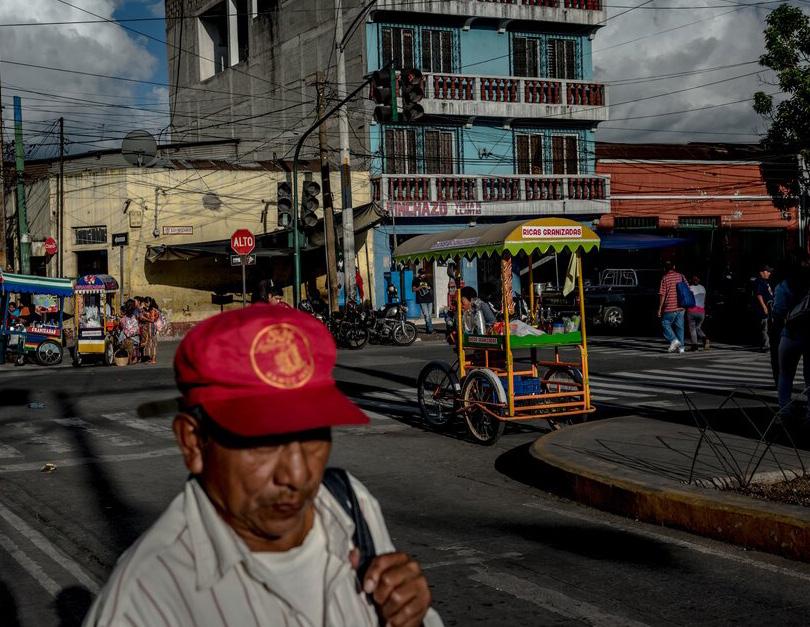
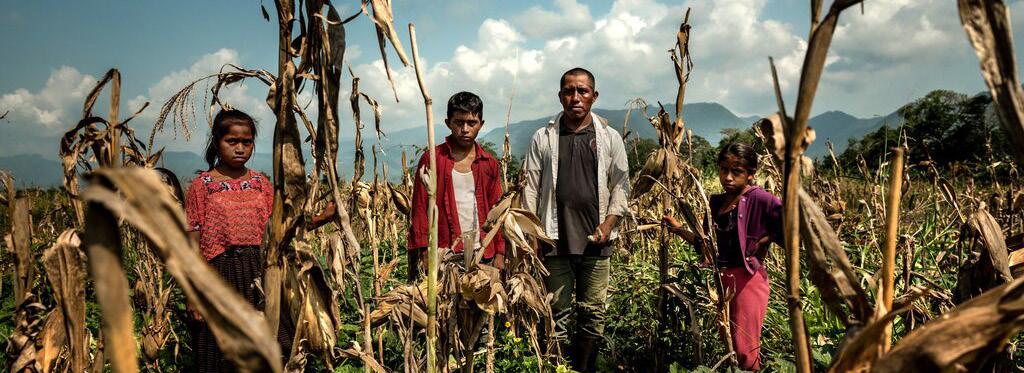
If others have better ideas for estimating how climate change affects migration, they should publish them.
Top: ALTA VERAPAZ, GUATEMALA. Carlos Tiul, an Indigenous farmer whose maize crop has failed, with his children. As with much modeling work, the point here is not to provide concrete numerical predictions so much as it is to provide glimpses into possible futures. Human movement is notoriously hard to model, and as many climate researchers have noted, it is important not to add a ” false precision to the political battles that inevitably surround any discussion of migration. But our model offers something far more potentially valuable to policymakers: a detailed look at the staggering human suffering that will be inflicted if countries shut their doors. In recent months, the coronavirus pandemic has offered a test run on whether humanity has the capacity to avert a predictable — and predicted — catastrophe. Some countries have fared better. But the United States has failed. The climate crisis will test the developed world again, on a larger scale, with higher stakes. The only way to mitigate the most destabilizing aspects of mass migration is to prepare for it, and preparation demands a sharper imagining of where people are likely to go, and when. The modeling was a start. But it was hyperlocal instead of global, and it left open huge questions: how cultural differences might change outcomes, for example, or how population shifts might occur across larger regions. It was also controversial, igniting a backlash among climate-change skeptics, who attacked the modeling effort as “guesswork” built on “tenuous assumptions” and argued that a model couldn’t untangle the effect of climate change from all the other complex influences that determine human decision-making and migration. That argument eventually found some traction with migration researchers, many of whom remain reluctant to model precise migration figures. But to Oppenheimer and Krueger, the risks of putting a specific shape to this well established but amorphous threat seemed worth taking. In the early 1970s, after all, many researchers had made a similar argument against using computer models to forecast climate change, arguing that scientists shouldn’t traffic in predictions. Others ignored that advice, producing some of the earliest projections about the dire impact of climate change, and with them some of the earliest opportunities to try to steer away from that fate. Trying to project the consequences of climate-driven migration, to Oppenheimer, called for similarly provocative efforts. “If others have better ideas for estimating how climate change affects migration,” he wrote in 2010, “they should publish them.” Since then, Oppenheimer’s approach has become common. Dozens more studies have applied econometric modeling to climate-related problems, seizing on troves of data to better understand how environmental change and conflict each lead to migration and clarify how the cycle works. Climate is rarely the main cause of migration, the studies have generally found, but it is almost always an exacerbating one. As they have looked more closely, migration researchers have found climate’s subtle fingerprints almost everywhere. Drought helped push many Syrians into cities before the war, worsening tensions and leading to rising discontent; crop losses led to unemployment that stoked Arab Spring uprisings in Egypt and Libya; Brexit, even, was arguably a ripple effect of the influx of migrants brought to Europe by the wars that followed. And all those effects were bound up with the movement of just two million people. As the mechanisms of climate migration have come into sharper focus — food scarcity, water scarcity and heat — the latent potential for large-scale movement comes to seem astronomically larger.
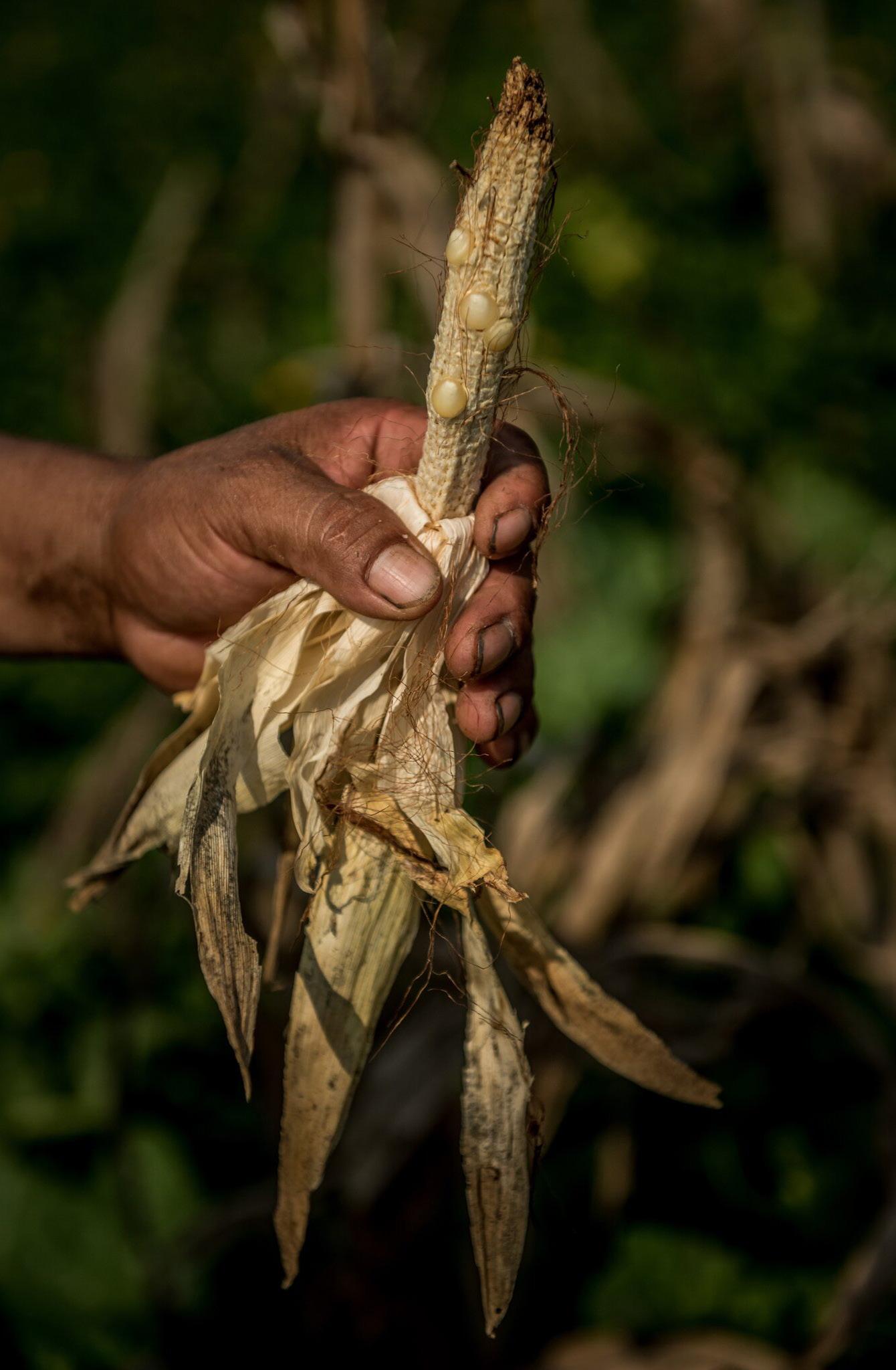
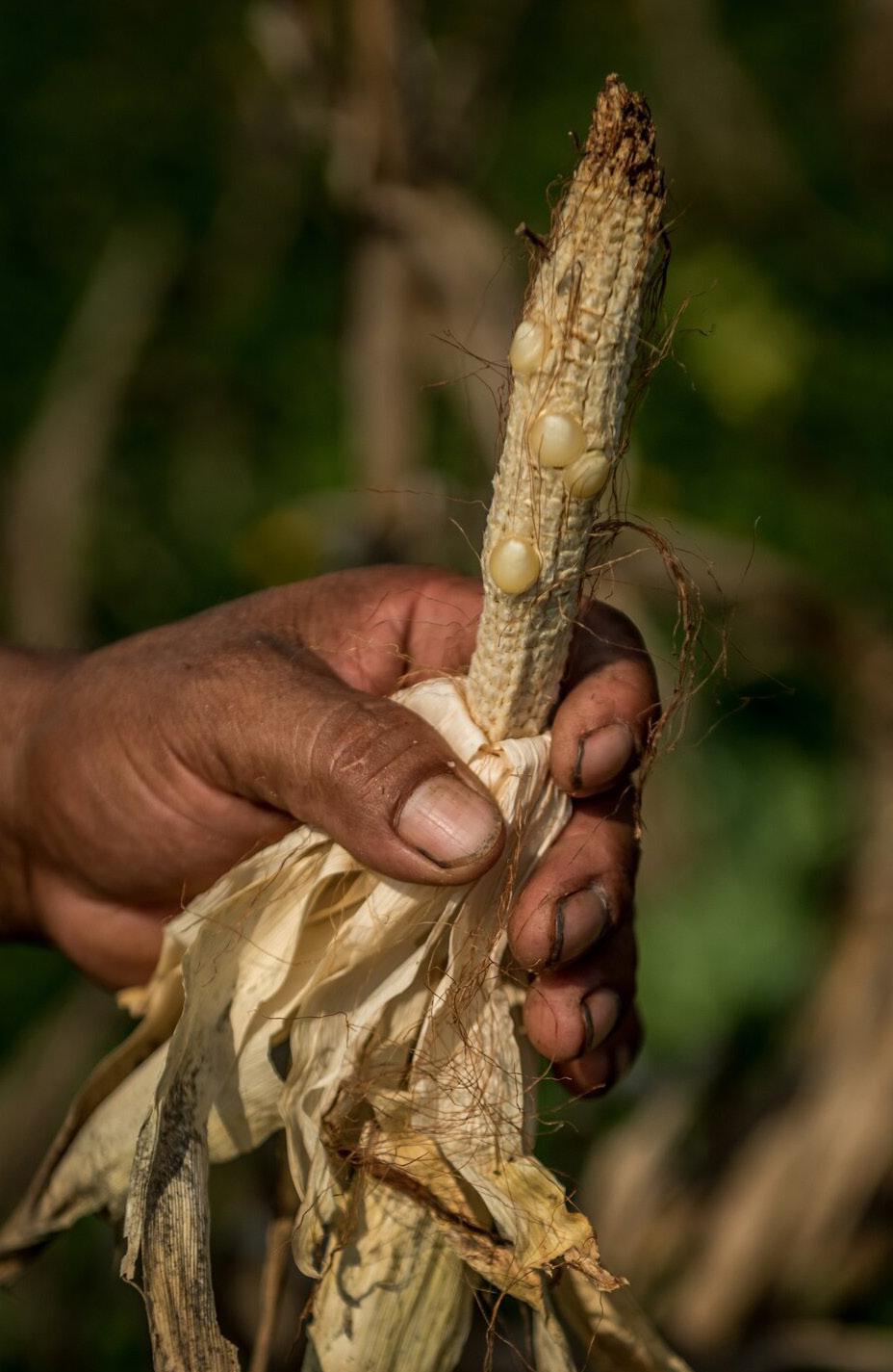
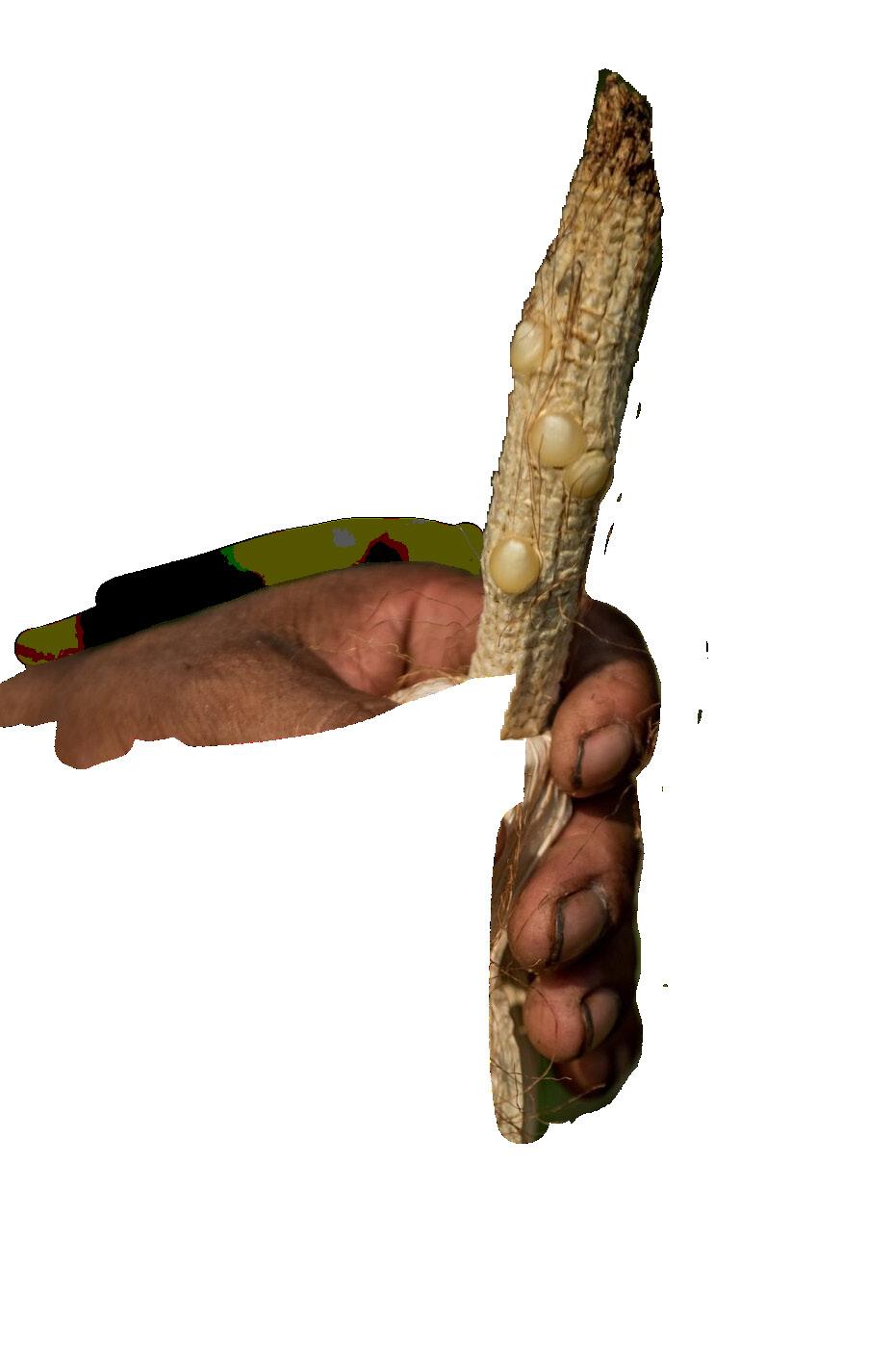
ALTA VERAPAZ. An ear of maize from a failed crop.

Today, 1% of the world is a barely livable hot zone By 2070, that portion could go up to 19%. Billions of people call this land home. Where will they go? we’re going to be like people in the lifeboat, beating on those that are trying to climb in.
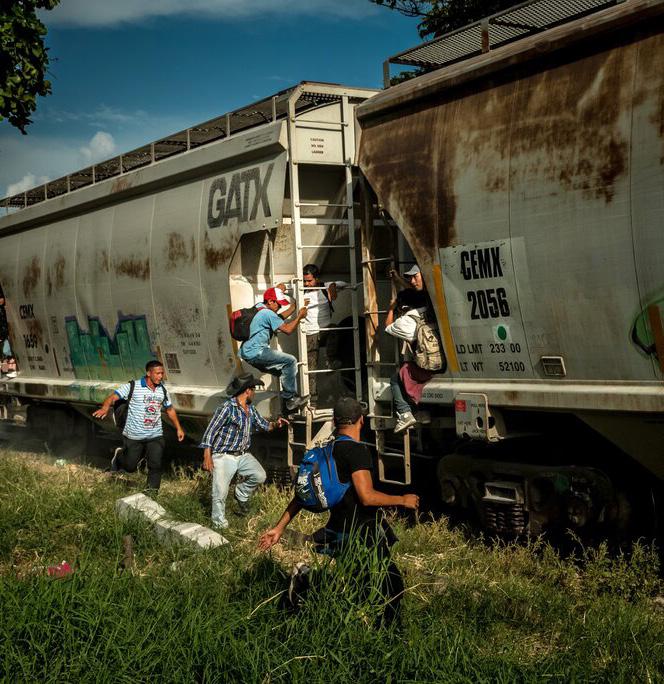
North Africa’s Sahel provides an example. In the nine countries stretching across the continent from Mauritania to Sudan, extraordinary population growth and steep environmental decline are on a collision course. Past droughts, most likely caused by climate change, have already killed more than 100,000 people there. And the region — with more than 150 million people and growing — is threatened by rapid desertification, even more severe water shortages and deforestation. Today researchers at the United Nations estimate that some 65 percent of farmable lands have already been degraded. “My deep fear,” said Solomon Hsiang, a climate researcher and economist at the University of California, Berkeley, is that Africa’s transition into a post-climate-change civilization “leads to a constant outpouring of people.” The story is similar in South Asia, where nearly onefourth of the global population lives. The World Bank projects that the region will soon have the highest prevalence of food insecurity in the world. While some 8.5 million people have fled already — resettling mostly in the Persian Gulf — 17 million to 36 million more people may soon be uprooted, the World Bank found. If past patterns are a measure, many will settle in India’s Ganges Valley; by the end of the century, heat waves and humidity will become so extreme there that people without air-conditioning will simply die. If it is not drought and crop failures that force large numbers of people to flee, it will be the rising seas. We are now learning that climate scientists have been underestimating the future displacement from rising tides by a factor of three, with the likely toll being some 150 million globally. New projections show high tides subsuming much of Vietnam by 2050 — including most of the Mekong Delta, now home to 18 million people — as well as parts of China and Thailand, most of southern Iraq and nearly all of the Left: ALTA VERAPAZ. Residents near the trickle that remains of the river that once flowed through the Nuevo Paraíso Indigenous community.
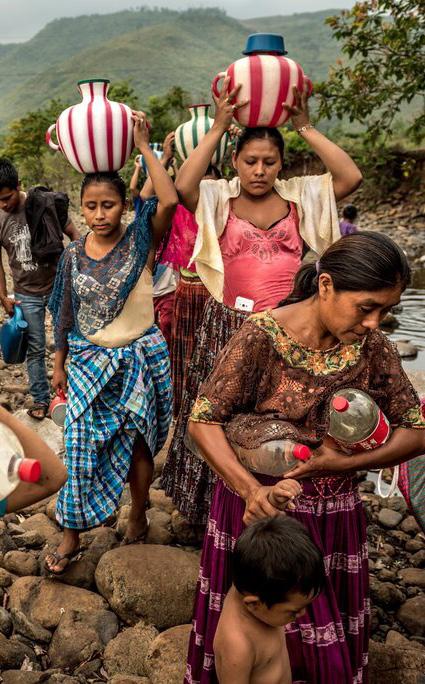
Right: CHIAPAS, MEXICO. Coto (right) hopping a train with other migrants.
Nile Delta, Egypt’s breadbasket. Many coastal regions of the United States are also at risk. Through all the research, rough predictions have emerged about the scale of total global climate migration — they range from 50 million to 300 million people displaced — but the global data is limited, and uncertainty remained about how to apply patterns of behavior to specific people in specific places. Now, though, new research on both fronts has created an opportunity to improve the models tremendously. A few years ago, climate geographers from Columbia University and the City University of New York began working with the World Bank to build a next-generation tool to establish plausible migration scenarios for the future. The idea was to build on the Oppenheimer-style measure of response to the environment with other methods of analysis, including a “gravity” model, which assesses the relative attractiveness of destinations with the hope of mathematically anticipating where migrants might end up. The resulting report,published in early 2018, involved six European and American institutions and took nearly two years to complete. The bank’s work targeted climate hot spots in sub-Saharan Africa, South Asia and Latin America, focusing not on the emergency displacement of people from natural disasters but on their premeditated responses to what researchers call “slow-onset” shifts in the environment. They determined that as climate change progressed in just these three regions alone, as many as 143 million people would be displaced within their own borders, moving mostly from rural areas to nearby towns and cities. The study, though, wasn’t fine-tuned to specific climatic changes like declining groundwater. And it didn’t even try to address the elephant in the room: How would the climate push people to migrate across international borders? Our modeling and the consensus of academics point to the same bottom line: If societies respond aggressively to climate change and migration and increase their resilience to it, food production will be shored up, poverty reduced and international migration slowed — factors that could help the world remain more stable and more peaceful. If leaders take fewer actions against climate change, or more punitive ones against migrants, food insecurity will deepen, as will poverty. Populations will surge, and cross-border movement will be restricted, leading to greater suffering. Whatever actions governments take next — and when they do it — makes a difference. The window for action is closing. The world can now expect that with every degree of temperature increase, roughly a billion people will be pushed outside the zone in which humans have lived for thousands of years. For a long time, the climate alarm has been sounded in terms of its economic toll, but now it can increasingly be counted in people harmed. The worst danger, Hinde warned on our walk, is believing that something so frail and ephemeral as a wall can ever be an effective shield against the tide of history. “If we don’t develop a different attitude,” he said, “we’re going to be like people in the lifeboat, beating on those that are trying to climb in.”



